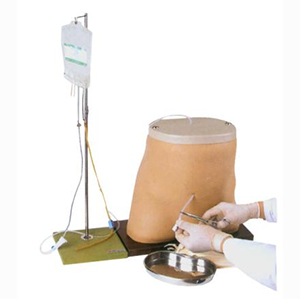

Article tag: Coated dialysis model| BIX-L64| Medical clinical model|
In summary, the membrane dialysis model shows significant advantages in reducing the risk of dialysis. It can not only improve the efficiency of dialysis, but also effectively reduce the occurrence of common complications and improve the treatment safety of patients. Although more clinical data are needed, from the existing research and expert opinion, th...
In dialysis treatment, patients face the risk of infection, poor blood flow, and low dialysis efficiency. Can lamination dialysis model, as a new dialysis technology, effectively reduce these risks? From the perspective of clinical significance, industry experts' views, and data support, the coated dialysis model appears to have potential in reducing dialysis risk.
Clinical significance: Reduce complications and improve treatment safety
By using special membrane technology in the dialysis process, the exchange efficiency of dialysate and blood can be effectively improved, so as to improve the dialysis effect. The advantage of this model is that it reduces the time and frequency of blood contact with the outside world, reducing the risk of infection and thrombosis. Especially in long-term dialysis patients, infection is one of the leading causes of complications and death. The use of membrane dialysis models helps to reduce the incidence of these common complications.

Industry experts: Improve treatment safety
Industry experts generally agree that the application of coated dialysis models provides a more efficient and safer option for dialysis treatment. Experts point out that this new technology can optimize the speed of blood flow and dialysate exchange, thereby reducing hemodynamic instability, low blood pressure, heart burden and other risks, especially suitable for high-risk patient groups, such as elderly patients or patients with multiple diseases.
Data support: Significant effect on reducing the risk of dialysis
A number of clinical studies have shown that patients using the lamination dialysis model have significant improvements in infection rates, blood flow efficiency and complication rates. In one study, infection rates were reduced by about 40% in patients using the lamination dialysis model, and hemodynamic instability was reduced by more than 25%. In addition, the membrane dialysis model also improves the clearance rate of dialysis, enhances the treatment effect of patients, and further reduces the associated health risks.
Conclusion: An effective tool for reducing dialysis risk
In summary, the membrane dialysis model shows significant advantages in reducing the risk of dialysis. It can not only improve the efficiency of dialysis, but also effectively reduce the occurrence of common complications and improve the treatment safety of patients. Although more clinical data are needed, from the existing research and expert opinion, there is no doubt that the lamination dialysis model provides a safer and more efficient option for dialysis treatment.